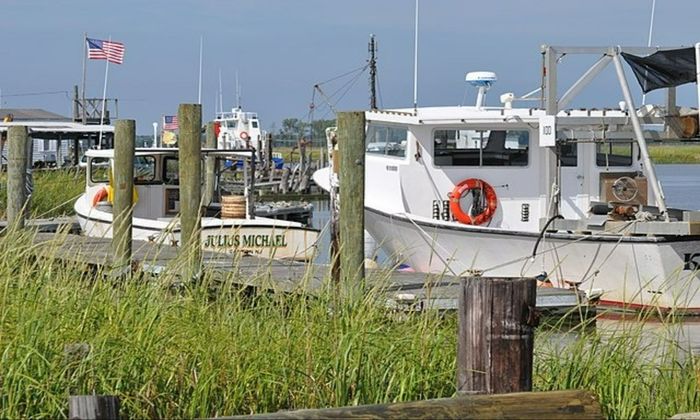The Fishing Industry and Ocean Pollution
Read all about how the fishing industry contributes to the state of the ocean today and what we can all do to be as ocean-friendly as possible.
Ocean pollution is one of the most pressing environmental issues our world faces today. Aside from trash regularly making its way into our seas and oceans, oil spills, sewage, and industrial waste destroy the marine ecosystem one coral reef at a time. Even the sunscreen and other topicals we put on whenever we swim have a detrimental effect on the waters and the wildlife species that call them home.
The Fishing Industry’s Impact on Ocean Pollution
Unfortunately, one of the biggest contributors to ocean pollution is the industry most reliant on the oceans — the fishing industry. Commercial fishing and aquafarming, two subsets of the fishing industry responsible for meeting the demand for fish as food, are two of the largest culprits. However, as recreational anglers, we must not neglect the fact that we, too, contribute to this problem.
1. Commercial Fishing

Aside from overfishing, commercial fishing exacerbates the poor health of the oceans with the amount of fishing gear it abandons or loses in the water. In the Great Pacific Garbage Patch, 86% of plastics are fishing nets. According to a recent study by The Nature Conservancy and the University of California Santa Barbara, over a hundred million pounds of plastic pollute the oceans yearly from fishing gear. And this report only accounts for the lost gear when in use — so there may be more that we’re unaware of.

Fishing gear abandoned in the waters is even more dangerous than other marine debris. Remember, these equipment are designed to catch fish — so they can effectively catch, injure, and kill species in the waters, thus the term “ghost fishing.” These gear can also damage coral reefs, grass beds, and salt marshes — important habitats and sources of forage for fish. These gear can also develop and give out toxins and chemical pollutants which are harmful to the habitats and the entire food web. And when these materials break down, they turn into microplastics that fish and other marine species can accidentally consume.
2. Aquafarming
Aquafarming is yet another aspect of the fishing industry that’s growing in demand as more people consume fish as their primary source of protein. The practice involves farming marine or freshwater fish and other species in controlled environments. The usual species farmed include salmon and shrimp. The idea that they are grown in “controlled” environments is up for debate based on the impact the practice has on the natural environment.
Aquafarming contributes to ocean pollution through the nitrogen and phosphorus-based nutrient build-up that it releases into the coastal environments. These accumulated nutrients come from the dead fish, uneaten fish food, and the feces of the farmed organisms. Add to that the impact of the pesticides and other drugs, including antibiotics, used to maintain the “controlled environments.” The pollutants caused by aquafarming have also contributed to the spread of diseases in the waters, destroying ecosystems. The migratory characteristic of some farmed fish, such as salmon, has also helped transmit diseases between farmed and wild species.
3. Recreational Fishing
While it’s easier to imagine how commercial fishing fleets can destroy oceans, we should also consider how recreational angling can contribute to ocean pollution. It’s hard to wrap one’s head around how a solitary angler casting a line on the surf can have an impact on the overall health of the world’s oceans, but consider the fact that there are more than 200 million recreational anglers like you who partake in the hobby each year. We’ve all lost a line or a hook at least once on every fishing trip. Imagine all those 200 million anglers losing their fishing gear in the ocean.
Unlike commercial fishing, recreational angling seems to be less regulated in many places all over the world. While at least 86 nations have recreational angling in their fisheries management legislation, many developing countries do not, even as many recreational anglers flock to these places in search of rare fish.
What Can We Do?
As recreational anglers, the realm of commercial fishing and aquafarming is beyond our control. The best we can do as citizens contribute to the conversation by supporting studies and legislations aimed at mitigating ocean pollution, supporting sustainably sourced seafood as consumers, and consuming and wasting less.

As recreational anglers, here are some things we can incorporate into our fishing practices to be as ocean-friendly as possible:
1. Use stone or metal weights and artificial bait that do not contain lead.
2. Use oxidizable hooks that degrade when lost.
3. Avoid the use of plastic buoys.
4. Be careful when choosing a fishing spot — avoid bird’s nests and stepping on rock organisms.
5. Clean as you go.
You may think you cannot significantly impact ocean pollution or prevent it as an individual angler. However, you should also remember that more than 200 million of us are there. That’s enough to effect change in the world. If you transform your practice into an environmentally sustainable you could influence other anglers around you, including your children, which could change generations of future anglers.




